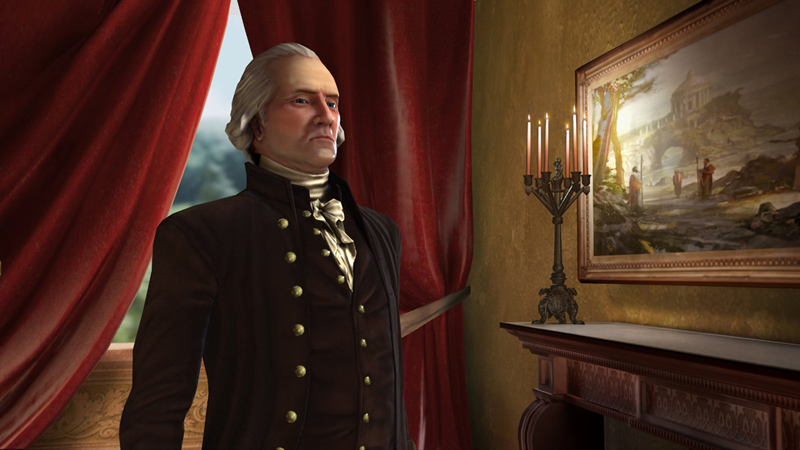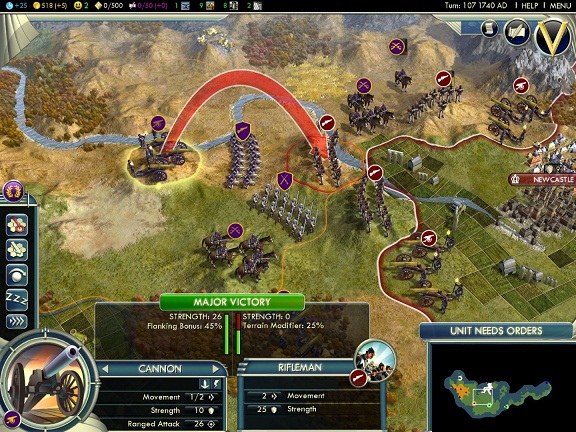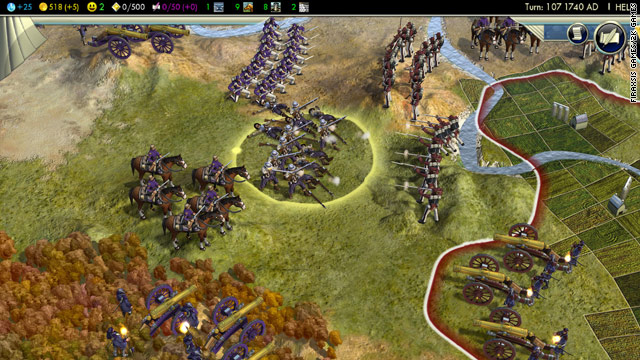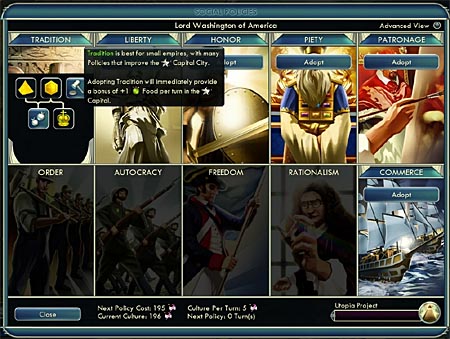I started up Civilization V with a degree of trepidation. While the previous versions were great games, they always felt like rehashes of the same Civilization II that I played oh so long ago but with added gimmicks and window dressing. At its core, the game’s features continued to remain mostly the same but with graphical updates; the biggest changes were the addition of cultural borders and the new victory conditions, mainly taken from a spinoff, Alpha Centauri. In Civilization V, the game has been significantly overhauled, removing a great deal of interface in favor of simplification, vastly improving combat, making social control more customizable as well as reducing mass unit and city micromanagement. But you know, these scary new changes might actually be a good thing.

Civilization is a grand strategy game spanning from 4000BC to 2100AD in which you found and build a civilization while fending off or conquering competing civilizations. Domestically, you construct cities, roads, mines, farms and other structures that allow you to develop technology, a military, and a stable economy. However, the other civilizations that exist around yours also have these goals in mind, and they will do anything to assure their success at the expense of yours. As a result, it is important to explore the world and exploit the wealth of the land before they do. Of course, not all foreign civilizations are out for your blood, as you can form alliances that can range from full military cooperation to scientific development or trading relationships; despite the variety of these options, it didn’t really seem like a fully fleshed out system. There was little different about dealing with each AI civilization, no particular quirks you had to deal with, and the lack of trading technology is a big leap for people who liked Civ IV to take. New to the series is the inclusion of NPC city-states, a form of non-expanding civilization that offers bonuses to allies or conquerors; the player builds up reputation with them, through bribes, unit gifts or completing events they periodically issue. These interactions can prove to be incidental to nearly essential, as many of the resources you need to build units may be only found within territory controlled by these city-states or by competing civilizations. The fact that most resources are much rarer than in previous incarnations makes them much more of a game changing element than ever before; protection of these resources becomes a priority as many of the units after the first era require them if they are to be built.


Combat and unit movement has received a major overhaul in comparison to other games in the series. Generally the gameplay is fought on a smaller scale, meaning that individual unit-armies have a much larger role than before. In this incarnation, only a single unit can fill a space on the map, which itself has evolved from the 8-direction square pattern to a new 6-direction hex pattern. This means that stacking armies is gone, and so is the impersonal repetition of fighting with multitudes of units. The individual units gain experience and bonuses that you can customize to your liking, such as extra damage to particular terrain, or cities, or shared bonuses if two allied armies are touching on the grid. One thing that was really welcome and needed for streamlining is that the old sea transports are gone. Now individual units can ‘embark’ into their own personal transport travel across the waves without having to wait for a transport to pick them up. The land itself adds specific bonuses or penalties, adding impassable areas and choke points to maps; this, in addition to the single army/tile mechanic, causes battles to be spread over large areas and make protection of territory itself a vital effort, lest you be boxed in and crushed. The specialized roles of units are much more emphasized with the limited unit count. Foot soldiers are the general unit, good for defense and attack but are slow, mounted units are excellent for quick raids but stink for defense, ranged units deal the most damage but are awful in melee. Siege units are the powerhouses of ranged combat - they are effective against any unit on the field and are a vital and reliable way of attacking cities without suffering severe casualties. As a result, the game has become much more tactical in army composition and a diverse array of units is necessary to overcome obstacles.

Social Policies are also a new feature; much like religion in Civilization IV or social engineering in Alpha Centauri, Social Policies provide certain perks to a civilization based on how many culture points they amass. Culture points are generated by a variety of factors, such as certain buildings, Wonders, city-state bonuses, and others. Once a certain amount has been generated, a player can elect to spend them as a form of specialization tree, with each perk costing substantially more than the next. There are ten trees to choose from, three available from the beginning with others unlocking as the player progresses through the technological eras. Some trees are ideologically opposed, and so cannot be exploited at the same time; this forces a player to make choices about how his or her civilization develops, be it militaristic, diplomatic, expansionist or commercial. There is no limit other than this, so a player could put points into as many trees as they wanted or focus on one to achieve some great perk that is available down the line.
Civilization V has been refined into a much more user-friendly experience while also remaining very deep and varied. It is different, at first glance, so that may scare some people away. Many of the aspects that were clunky (religion) or ineffective (espionage) have been removed, while making the players more involved with their chosen civilization through much improved combat and calming down the chaos to ensure more personal experiences and encounters with their own troops, cities and neighbors. If you are a fan of strategy games, don’t be fooled by the idea that it is casual; the options within are endless.